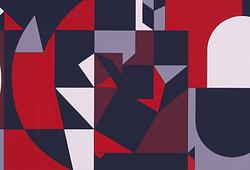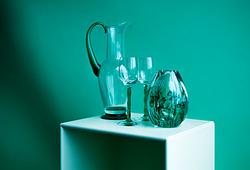Sigrid Hjertén
”Södra landet”
Signed Hjertén Grünewald. Executed in 1912. Canvas 65 x 48.5 cm.
Provenance
Art dealer Tore Gerschman (1913‑1992) Collection, Stockholm.
Uppsala Auktionskammare, Internationell kvalitetsauktion, 9 - 12 November, 2021, cat. no 304.
Exhibitions
Liljevalchs konsthall, Stockholm, ”Expressionistutställning”, May 1918, cat. no 431.
Sundsvalls museum, ”Sigrid Hjertén”, 15 june - 8 September 1985, cat. no 4.
Prins Eugens Waldemarsudde, Stockholm, ”Sigrid Hjertén”, 19 September - 27 October 1985, cat. no 4.
Vikingsbergs Konstmuseum, Helsingborg, ”Sigrid Hjertén”, 9 November - 8 December 1985, cat. no 4.
Göteborgs Konstmuseum, ”Sigrid Hjertén”, 12 December 1985 ‑ 2 February 1986, cat. no 4.
Liljevalchs konsthall, Stockholm, ”Sigrid Hjertén”, 17 March - 28 May 1995, cat. no 5.
Liljevalchs konsthall, Stockholm, ”Den stora färgskrällen: Sigrid Hjertén, Isaac Grünewald, Leander Engström”, 4 October 2008 ‑ 6 January 2009, cat. no 103.
Sven-Harrys konstmuseum, Stockholm, ”Konstnärernas Stockholm”, 15 June - 7 September 2016.
Prins Eugens Waldemarsudde, Stockholm, ”Sigrid Hjertén: En mästerlig kolorist”, 10 february - 26 August, 2018, cat. no 10.
Literature
Elisabet Haglund, "Sigrid Hjertén", 1985, mentioned p. 18 and illustrated.
Shulamith Behr ed., "Sigrid Hjertén", exhibition catalogue, Liljevalchs, 1995, illustrated full page and listed p. 206.
Görel Cavalli-Björkman, "Kvinna i avantgardet: Sigrid Hjertén. Liv och verk", 2017, mentioned p. 94.
More information
In the autumn of 1911, Sigrid Hjertén and Isaac Grünewald managed to rent a small loft at Kornhamnstorg in Gamla Stan, Stockholm. They were young, poor and had just returned from Paris, where they had both studied with Henri Matisse at the Academie Matisse. In November, their son Iván is born and Isaac and Sigrid get married. It is important for Sigrid to continue painting, and childcare is then arranged by Isaac's sisters Dora and Bertha, who take care of their young son as well as modelling for the artist couple.
From her combined apartment and studio on Kornhamnstorg, Sigrid Hjertén looked out over beautiful Stockholm. The view was breathtaking - to the south, she faced the heights of Slussen and the busy loading dock below, which was visited daily by merchant ships, workers and strollers on the pier. Below the window, the sound of the crowds between the market stalls could be heard from early morning to late evening. In 'Södra landet', 1912, she excels with outstanding technical skill and a boldness of colour that is completely analogue to modern painting in Sweden. The composition consists of water and a sailboat in the foreground, beyond which the walls glow an intense yellow colour and the houses and warehouses of Södermalm, or Söderlandet as it was then called, loom large. During this period Hjertén painted several paintings with perspectives and city views from Kornhamnstorg, such as "Från Kornhamnstorg", 1912 (Malmö Museum), "Torget", 1913 (Stockholm City Administration), "Den blå skutan", 1912 and the current painting "Södra landet”.The painting was exhibited at the momentous 'Expressionistutställningen' at Liljevalchs Konsthall in May 1918 and has subsequently been included in numerous exhibitions.
Sigrid Hjertén was a pioneer of her time. Her courage and determination took her from Sundsvall to Stockholm and on to the great art metropolis of the 20th century, Paris, where she arrived in September 1909. Many young artists travelled to Paris in the early 1900s and the word of the city's new radical painting had quickly spread to Scandinavia. Henri Matisse, who was a well-known artist in the city after his breakthrough at the 1905 Salon d'Automne, opened his Académie. The education at the Académie was free and therefore many young foreign artists living in Montparnasse, including Sigrid joined the school along with other Swedes. Matisse immediately noticed the young Swede's talent and Einar Nerman has described a particular episode: "I remember so well when one day Sigrid Hjertén's study was to be criticised. It was only a few dabs of colour that she had nonchalantly placed on the stretched canvas. A few mild colour chords, reminiscent of the old Swedish peasant fabrics that she had so recently studied and copied at the Nordiska museet in Stockholm. It was something new in colour and tone, and when the master stopped in front of her canvas, there were exclamations of delight: 'C'est merveilleux! C'est ravisant!' A rush of admiration goes through the evoutly listening crowd. Matisse has discovered her."
Sigrid was a true expressionist, influenced by both Matisse and Cézanne. By 1912, Sigrid Hjertén had blossomed as an independent artist who dared to go further than her contemporary colleagues in art. In 'Södra Landet', her sense of colour is particularly dominant, as she combines shimmering turquoise blue with soft pink and yellow tones with a unique sense of colour.






















































